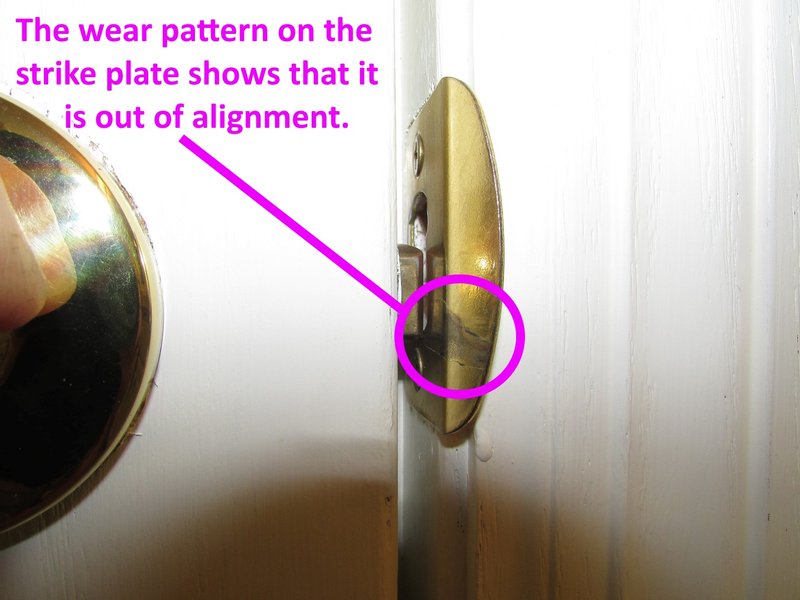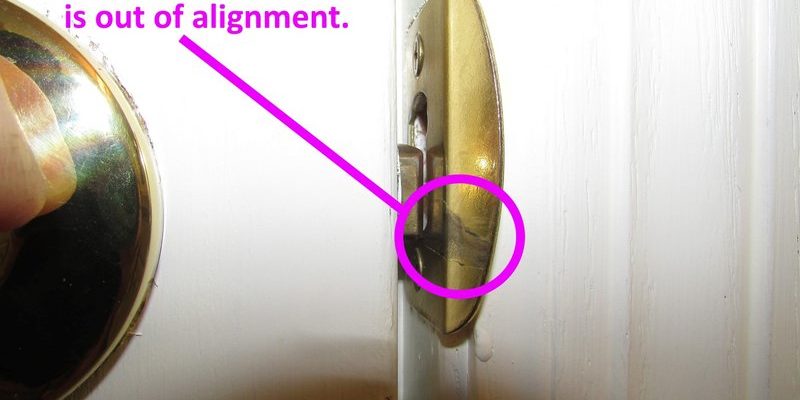
You might think that aligning a strike plate, the metal piece on the door frame that the latch hits, is a job only a seasoned handyman can tackle. But honestly, with just a plastic shim, you can fix this issue in no time. Whether you’re dealing with a standard interior door or an exterior door that won’t shut, getting this right can improve your home’s security and energy efficiency. Let’s dive into how to use a plastic shim to correct that pesky misaligned strike plate.
What Is a Strike Plate and Why Is It Important?
Before we get into the nitty-gritty of using shims, let’s talk about what a strike plate actually is. Essentially, a strike plate is that small piece of metal attached to the door frame, where the latch or bolt of the door locks into place. When the door closes, the latch hits this plate, which keeps the door secure.
Why is it so important? A properly aligned strike plate ensures that the latch engages correctly, keeping your door locked and secure. If it’s misaligned, your door might not latch at all, leading to security vulnerabilities. Think of it as the difference between a good night’s sleep and spending the night worrying about intruders. It’s a small component, but it plays a huge role in your home’s safety.
Identifying Misalignment Issues
You might be wondering how to know if your strike plate is misaligned. One straightforward way is to check how your door closes. Does it seem to stick? Or maybe it doesn’t latch at all? Here are some signs to look out for:
- Your door won’t completely close without a push.
- The latch doesn’t engage with the strike plate when the door is shut.
- You can see gaps between the door and frame.
If you notice any of these problems, a shim could be your solution. Misalignment can happen for various reasons. It could be due to the house settling over time or a door that’s warped. Knowing the symptoms helps you identify the issue early, making repairs simpler.
What You’ll Need: Tools and Materials
Before jumping into the repair, it’s helpful to gather all the necessary tools and materials. Here’s a quick checklist of what you’ll need to get started:
- Plastic shim: This thin, wedge-like piece is key for adjusting the strike plate.
- Screwdriver: A regular or Phillips-head screwdriver will be needed, depending on your screws.
- Measuring tape: For ensuring your placements are accurate.
- Utility knife: If you need to trim the shim for a snug fit.
Having everything ready not only saves time, but it also makes the process smoother. Just think of it as laying the groundwork before constructing a house. You wouldn’t want to start building without a solid foundation, right?
Step-by-Step Guide to Using a Plastic Shim
Now that you’re equipped with the right tools, let’s walk through the steps to correct a misaligned strike plate.
Step 1: Inspect the Current Setup
Begin by closing the door gently to see how it interacts with the strike plate. Look closely at where the latch meets the strike plate. This visual inspection will help you determine how far off the alignment is.
You might want to mark the latch position on the strike plate lightly with a pencil to see how far off it needs to move. This preliminary step is important because it gives you a clear target for adjustments.
Step 2: Remove the Strike Plate
Once you have a good idea of where the latch lands, grab your screwdriver and carefully remove the screws holding the strike plate in place. Set the screws aside in a safe spot; losing these tiny parts can be frustrating.
With the strike plate off, take a closer look at the area around it. This gives you a better view of any damages or irregularities in the door frame that might need attention.
Step 3: Insert the Plastic Shim
Here’s where the magic happens. Take your plastic shim and slide it behind the strike plate. Depending on how much adjustment you need, you may only need a thin shim. If the hole is really off, you might use multiple shims stacked together.
Gently press the shim in place and see how that affects the alignment. Once you’re satisfied, position the strike plate back on top. This will create the necessary gap to allow the latch to engage properly.
Step 4: Reattach the Strike Plate
Now it’s time to screw the strike plate back into place, securing the shim behind it. Make sure to align the screw holes properly. When you’re tightening the screws, don’t overdo it. Just enough to hold everything snugly without stripping the holes.
Once the plate is secured, close the door again and check how the latch fits. You want it to click into place smoothly. If it still feels off, adjust the shim by adding or removing thickness until it’s just right.
Testing Your Fix
After you’ve adjusted everything, testing is crucial. Close the door several times to see how well the latch engages with the strike plate. It should catch without any force, allowing the door to close securely.
If you find that it still isn’t latching correctly, you may need to repeat the shim adjustment process. This is a trial-and-error part of the project, so don’t get discouraged if it takes a little tweaking.
Why This Matters for Your Home
Correcting a misaligned strike plate isn’t just a minor home repair; it’s about maintaining the safety and integrity of your space. A properly functioning door can deter unwanted access and keep your family safe. Plus, you’ll likely find an added benefit: your door will close more quietly and smoothly.
Using a plastic shim is an easy, cost-effective way to solve the problem without calling in a pro. By knowing how to tackle this issue on your own, you gain confidence in your ability to handle minor repairs, which can lead to even more DIY projects down the road.
In the end, every little repair adds up to a more comfortable, secure living environment. You might even discover a hidden talent for home improvement along the way!
Other Options and Considerations
While plastic shims are a great quick fix, you might wonder about other solutions. For instance, if the misalignment persists, it might be worth looking into adjusting the door hinges or replacing the strike plate altogether. Sometimes, old hardware simply needs an upgrade.
You could also consider using *metal shims* for additional durability, especially in high-traffic areas. But honestly, for most home settings, plastic shims do the trick just fine. They’re easy to work with and readily available.
If you’re ever in doubt, don’t hesitate to reach out to a local handyman. But with this guide, I hope you feel empowered to tackle the misalignment yourself. Remember, every little repair you make helps your home feel more like *yours*.
In conclusion, using a plastic shim to correct a misaligned strike plate is a straightforward process that can dramatically improve your door’s functionality. It’s a small step that leads to a secure, comfortable home—something we all want. So grab that shim and get started!
